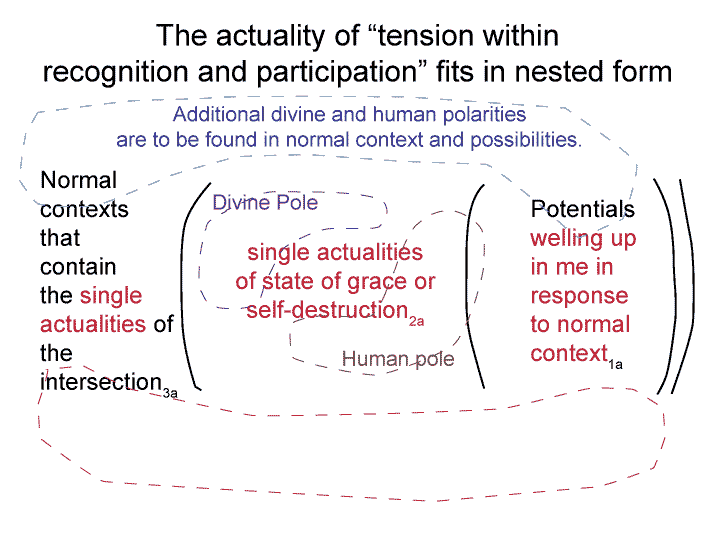Man and Sin by Piet Schoonenberg (1964) 2.1EE
Summary of text [comment] page 69
[At this point, I have a deeper appreciation of the qualifier ‘counter’ in Schoonenberg’s term ‘counterpole’.]
Schoonenberg uses the term to describe the difference between the source and the subject of grace.
[What have I seen with these models?
A fundamental polarity lies within the intersection containing the single actualities of the states of grace or self-destruction. Additional polarities are found in the content-level nested form incorporating this single actuality.
This is shown in blog 2.1 DY.]

